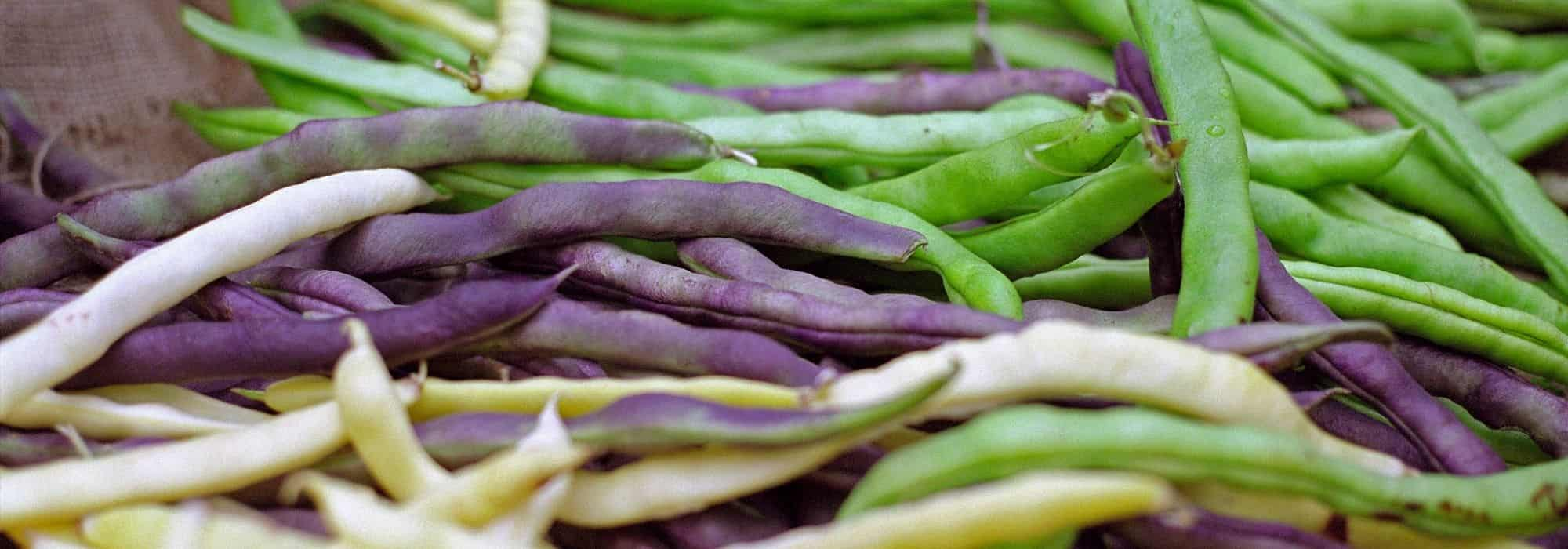
How to choose beans?
To make an informed choice of varieties!
Contents
Which gardener hasn’t found himself at a loss when faced with the choice of hundreds of varieties of beans (Phaseolus vulgaris) available to them? String beans, stringless beans, sugar snap beans, shelling beans, Spanish beans, dwarf beans, or climbing beans… The choice can often be a dilemma, and ultimately, our gardener resorts, almost in despair, to the variety that his father, or even his grandfather, grew before him. Yet by diversifying the varieties, he could harvest beans that suit his tastes and needs from June to October. To assist all gardeners who no longer want to waste their time deciphering the labels on seed packets, here is our selection of beans to plant based on various criteria ranging from flavour to colour, as well as earliness and productivity.
For their flavour
According to all bean enthusiasts, it is undoubtedly the dwarf string beans that possess the best taste qualities. These beans produce rather long, fine to extra-fine pods with an exceptional flavour. However, to enjoy their tenderness and unique taste, there is a downside: these beans must be watered regularly and harvested every 2 days when they are very young. So they are well worth the effort! Without this attentive care, they quickly become stringy.
In this category of beans, the choice is vast. You can either trust traditional and heirloom varieties like the Triomphe de Farcy, which is also an early and hardy variety, or the Fin de Bagnols, or you can opt for varieties known for their flavour, combined with other qualities: Cupidon rarely and late becomes stringy, Morgane offers excellent yield just like Delinel, and Talisman is very early.

Dwarf string beans Delinel, Cupidon, Talisman, and Triomphe de Farcy boast excellent flavour
For their colour
If there’s a legume that showcases colour, it’s definitely the bean. Traditionally and naturally, we talk about green beans. However, not all beans are green (at least in the vegetable garden, if not on the plate!).
These colourful beans must be sought in the category of mangetout beans that are enjoyed at maturity as they do not form any string or parchment. Generally, they are fleshier than string beans since both seeds and pods are edible.
Butter beans
Marvel of Venice or Rhine Gold is a climbing variety that produces golden-yellow pods, Fructidor is a repeat flowering variety harvested from June to October, Kinghorn lives up to its name with its straw-yellow pods, Major is known for its high yield, and Rocquencourt Butter is valued for its beautiful golden pods. As for Serpedor, it produces very pale, almost white, sword-shaped pods.
Purple beans
Aside from their unique colour that ranges between purple and deep red, these beans are delicious. Their only drawback is the loss of their lovely hue during cooking. Blauhilde is an old climbing variety that has no faults, Purple Queen boasts exceptional yield just like its improved version Amethyst. Finally, the climbing variety Carminat charms with its dark violet pods.
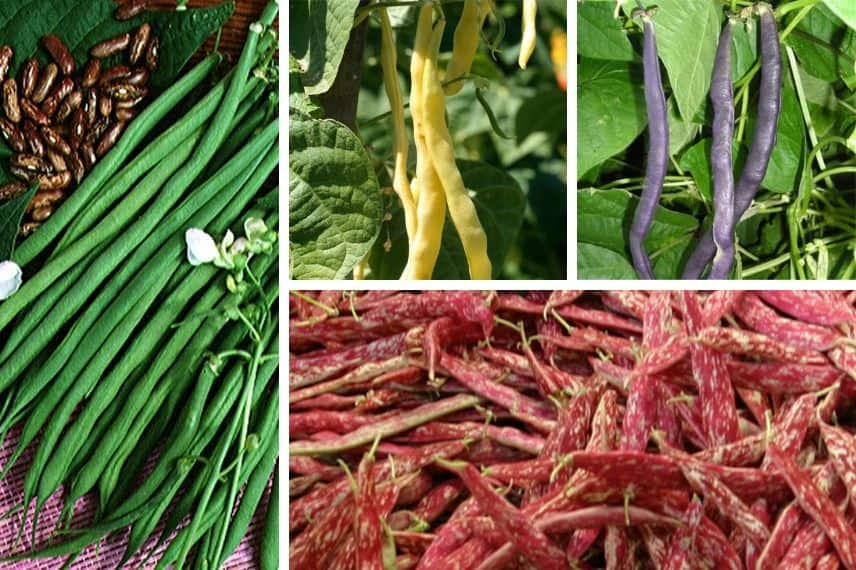
Beans come in green (Fin de Bagnols), yellow (climbing butter Marvel of Venice), purple (climbing Blauhilde), and red (dwarf shelling Big Barlotto)
Red beans
Red generally colours shelling beans. The Big Barlotto showcases this beautiful colour both on its pod and its seed, marbled with purple and white. The seeds of Fire Tongue 2 are pure white while its pods are carmine red streaked with cream. The pods of Blason and Flambo are also marbled with red. With its bright red seeds, the variety Canadian Wonder is ideal for preparing chili con carne.
Discover other Bean seeds
View all →Available in 0 sizes
Available in 1 sizes
Available in 1 sizes
Available in 1 sizes
Available in 1 sizes
Available in 1 sizes
Available in 1 sizes
Available in 1 sizes
Available in 1 sizes
Available in 1 sizes
For their early maturity
Gardeners eager to enjoy the fruits of their labour will choose varieties known for their earliness. Thus, the variety Contender remains one of the earliest, as the first pods can be enjoyed just 50 days after sowing. It is also a hardy variety. Prelude is a snap bean renowned for its earliness and yield.
Phénomène is a climbing snap bean that produces wide, flat, green pods starting in May. As for Algarve, a flat haricot coco, it has received an award from the Royal Horticultural Society for its earliness and productivity!
Among the earliest shelling beans, Michelet long pod and Soissons dwarf big foot certainly stand out.
Read also
How to grow beans in a pot?For their later aspect
To extend the bean season beyond summer, it is ideal to choose late varieties that will produce until October, or even November in regions with a mild climate or under cover. Thus, among dwarf string beans, the varieties Crockett and Favorel can be enjoyed until September if sown in July. And Processor is a snap bean that produces abundantly until October, without producing strings or parchment-like pods. The climbing variety Phénomène can also produce late, providing an opportunity to enjoy its beautiful white seeds. Just like Soissons gros blanc.
Among butter bean varieties, Merveille de Venise or Or du Rhin is recognised as being late.
For their productivity
When it comes to productivity, beans are champions. However, some varieties are known to be more productive than others. For instance, the pole bean variety Fortex, developed by INRA, abundantly produces long pods of 30 cm without strings or parchment. Another variety worth mentioning in the same category is Mistica.
Among dwarf filet beans, many varieties stand out for their productivity, often long and staggered. For example, Niki with its fine pods, Gourmandel, which is very tasty, Cordoba with its bright green pods, or even Delinel, which can also be eaten as a mangetout. And let’s not forget the extraordinary and delicious Aiguillon.
Indeed, one cannot mention high-yield mangetout without highlighting the varieties Argus, which is highly resistant to diseases, and Primel, known for its numerous clusters of straight pods.
For their resistance to diseases
Although resilient and easy to grow, beans can sometimes be affected by diseases such as anthracnose, which occurs when humidity is high. By selecting varieties that are particularly resistant to diseases, you increase your chances of a good harvest.
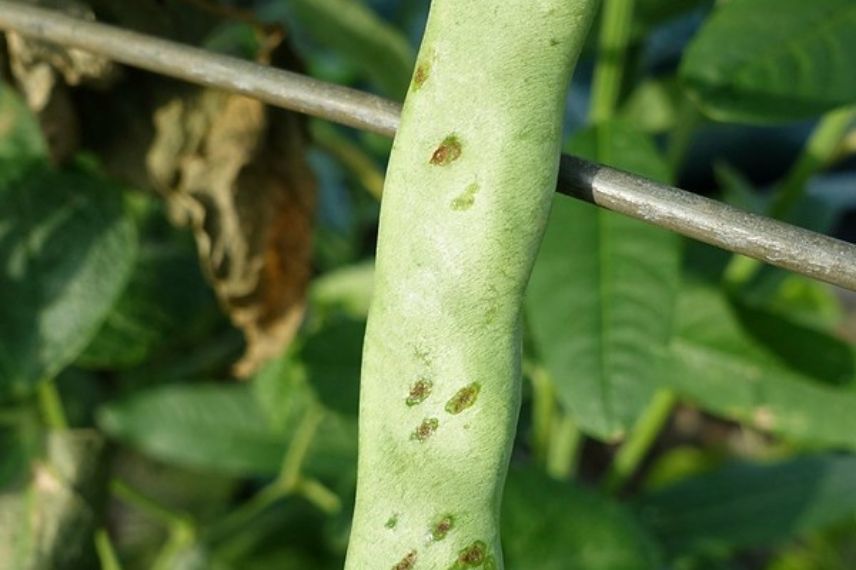
To combat certain bean diseases such as anthracnose (as illustrated), selecting resistant varieties is essential.
In general, snap beans are less susceptible to diseases. Among them are the Planeta, a flat coco, and the purple varieties Purple Queen and Amethyst. On the dwarf filet side, the Oxidel 2, an improvement on Oxidel, is just as resistant to diseases (including bean blight) as it is tasty and productive. The Sonata variety is well resistant to various bean viruses, just like Morgane, which also boasts an excellent yield. Finally, the varieties Carrousel, Delinel, and Primel, as well as the dwarf flageolet bean Flavert, are particularly strong against bean mosaic and anthracnose, rendering them completely insensitive.
For freezing preservation
Sometimes the production of beans is such that freezing needs to be considered. Some varieties do not lend themselves to this at all. Others can be frozen provided they are blanched for 5 to 6 minutes in boiling water, then plunged into ice water and dried carefully.
Thus, the variety Talisman, known for its earliness and very abundant harvest, freezes easily. Despite being frozen, this variety retains its flavour and texture. The variety Skipper, with its round-section pods, is also often mentioned by gardeners for its tolerance to freezing. Similarly, Primel, with its straight, long, and tender pods, and Delinel adapt well to freezing but also to canning.
For their versatility
Do you know the Spanish bean? Of the Phaseolus coccineus genus, it is a bean that boasts many qualities: it produces edible seeds and pods and features striking scarlet flowering. Very resilient and hardy, the Spanish bean easily climbs a support and decorates an unsightly wall. Among our varieties of Spanish bean, Scarlet Emperor adapts well to both poor soils and humid summers.
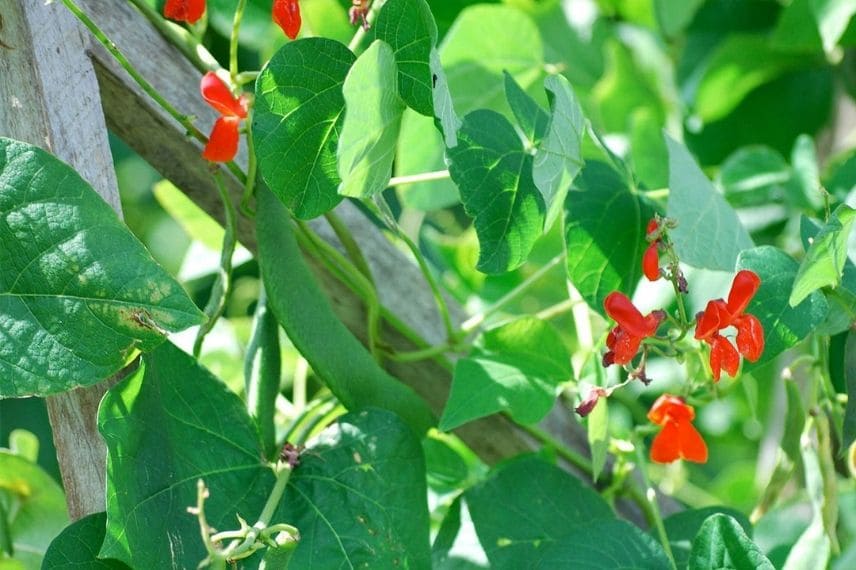
In the Spanish bean, flowers, pods, and seeds are edible
For a small garden
Do you have a small garden and love beans? Opt for climbing beans, which are less space-consuming and develop voluble stems capable of wrapping around the supports provided. Overall, these beans are more productive than dwarf varieties (expect 2 to 2.5 kg per m² compared to 1 to 1.5 kg per m²) but they also have the advantage of using less space and being easier on your back. Not to mention that the supports can take various forms, from a teepee to a Canadian tent. Very fun for children.

In a small garden, climbing beans are synonymous with space-saving
Feel free to make your selection according to your preferences from our complete range of climbing beans.
For the lazy gardener
Some beans showcase all their talents to make a gardener’s life easier. Some varieties of dwarf filet beans will first be harvested as extra-fine every two days, then as mangetout, at more spaced intervals. Notable examples include Aiguillon, as well as the dwarf filet bean Pongo, which also has the advantage of flowering and fruiting above the foliage to make harvesting easier.
The mangetout varieties Sansoucy, which is highly resistant to bean diseases, and Dominal, which is very productive, also display their flowers and pods outside the foliage.
- Subscribe!
- Contents
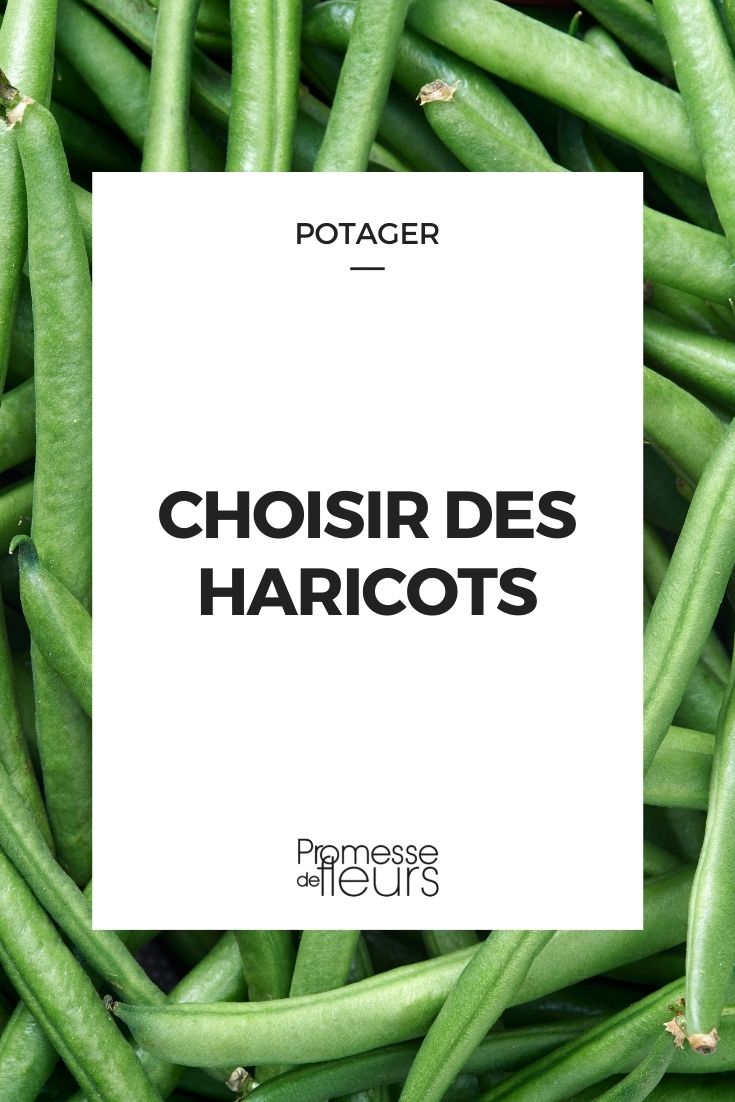
































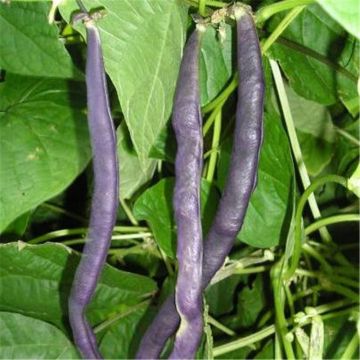
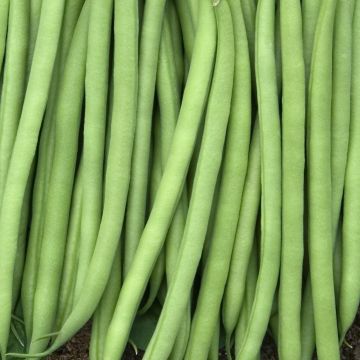
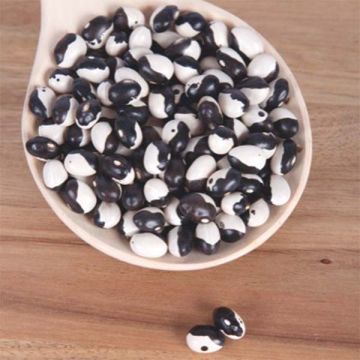
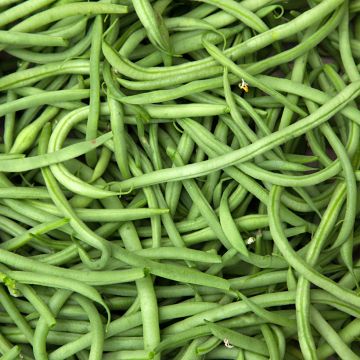
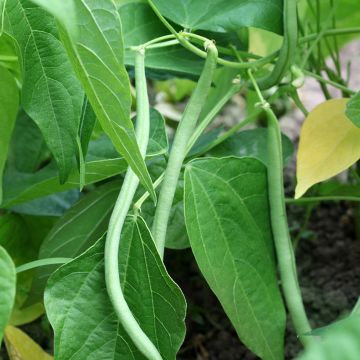
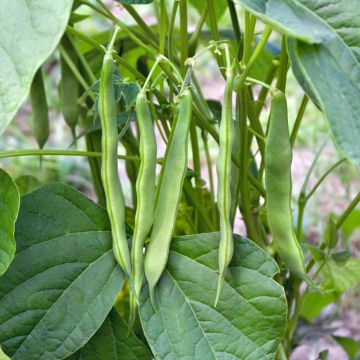
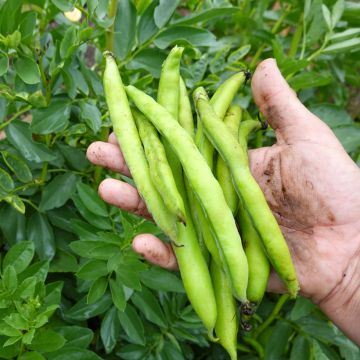
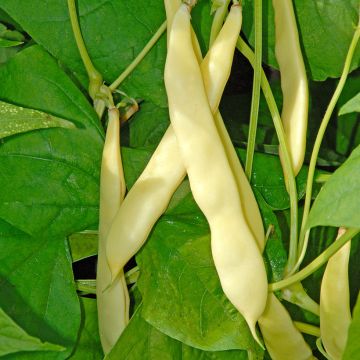
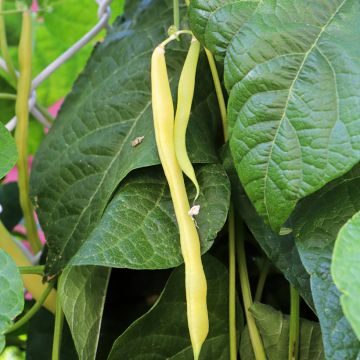
Comments